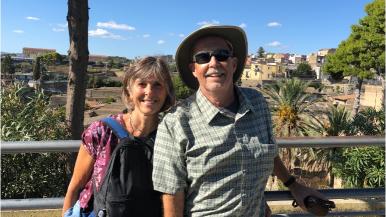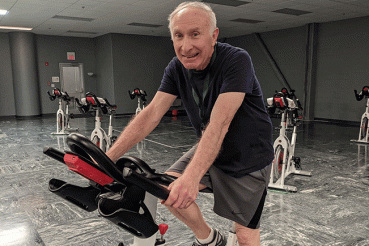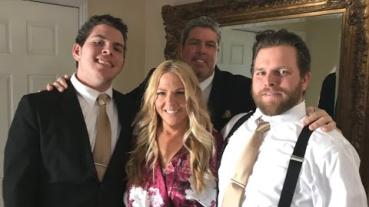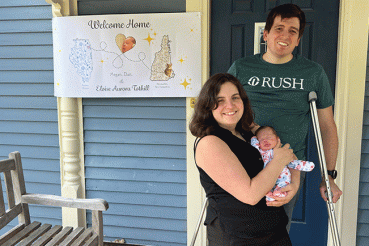Mark Toft, 65, and his wife, Donna, enjoy an active lifestyle. They walk, bike and swim and have been avid long-distance hikers. Before the pandemic, they took trips of about 100 miles, hiking eight to 12 miles a day and spending nights in different bed-and-breakfasts in small towns along the way. They even took a vacation to Scotland, where they hiked from Glasgow to Loch Ness along the West Highland Way. But spinal stenosis threatened to put a damper on that lifestyle.
Mark suffered from lumbar stenosis, a narrowing of the spinal cord which compresses the nerves traveling through the lower back into the legs. It commonly affects people in their 60s as a result of aging. Mark experienced numbness in his right leg after 10 minutes of walking. He would have to stop and stretch out his leg before continuing.
Relief with microsurgery
A microsurgery procedure relieved the problem, enabling Mark and his wife to continue to enjoy the hiking they love. An MRI identified the spot which was pressing on his nerve, and Rush Copley Medical Group neurosurgeon Kevin Kelly, MD, FAANS, performed a laminectomy to relieve the numbness. In this low-tech, minimally invasive procedure, Kelly made a tiny incision and removed ligaments to enlarge the spinal canal to relieve pressure on spinal canal nerves.
“Not all doctors do this,” Kelly says, but he and neurosurgeon Dmitry Ruban, MD, FAANS, take a conservative approach to their practice. Kelly performed a laminectomy as opposed to a spinal fusion. “We believe it’s worth putting patients through smaller surgeries and seeing how they do,” he explains. The patient goes home the next day with the hope that the microsurgery will prevent or delay the need for a fusion.
Although their general approach is to perform smaller, less invasive, less risky procedures, he and Ruban also routinely perform fusions and warn patients that more complex, involved operations may be necessary if the smaller operation is not definitive enough to alleviate symptoms.
Conservative approach
The conservative approach worked well for Mark. “I’m pleased with the outcome,” Mark said. “Dr. Kelly was very thorough and his follow-up was very good.” Mark was on his feet the next day, walking a mile a day several days after that and resumed a normal routine within six to eight weeks.
Mark is now doing stretching and strengthening exercises and walking to strengthen the muscles in his back and hopefully avoid future surgeries. He is “pleased as punch” with the outcome of his surgery. “It took care of 90% of the numbness and pain,” he says.
Just two months after the surgery, he and his wife traveled to Italy where he was able to walk, hike and sightsee with no pain. “We walked 75 miles and had a great time,” he says.
Today, with travel curtailed due to the pandemic, Mark continues to do well and keep active. He and his wife recently moved to Florida which affords them even more opportunity to enjoy the activities they love. Weekly, they bike 60 to 90 miles and walk 20 miles. They also go to the beach frequently and look forward to pools reopening soon so they can add swimming to the mix.




